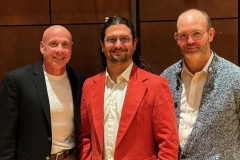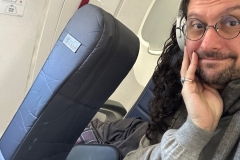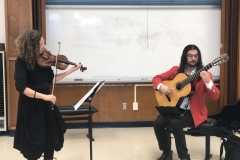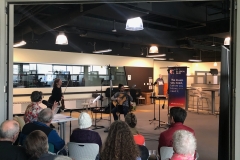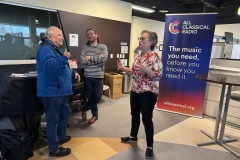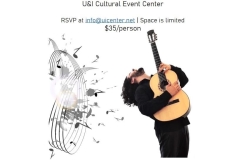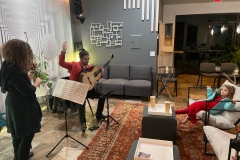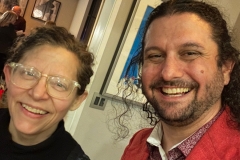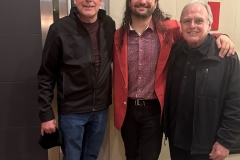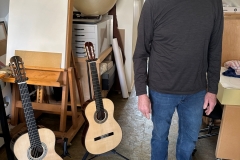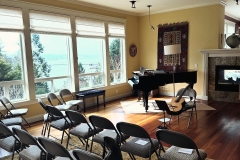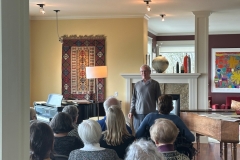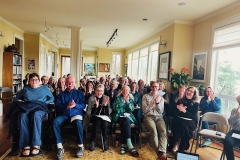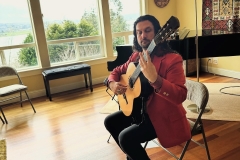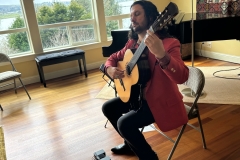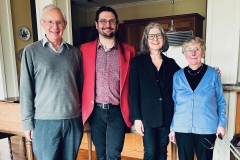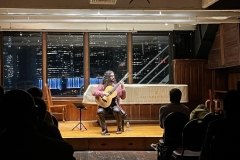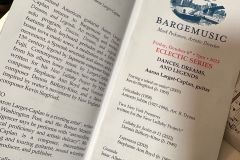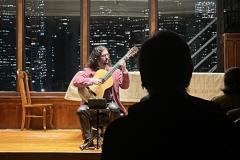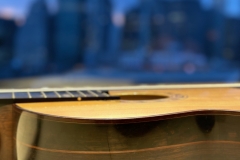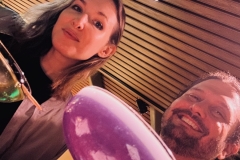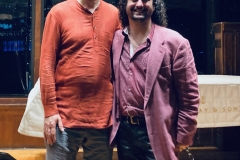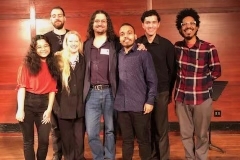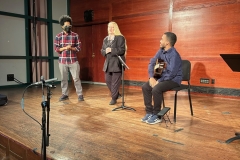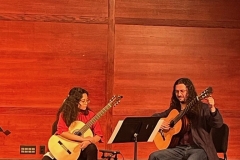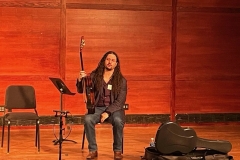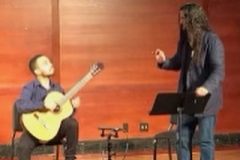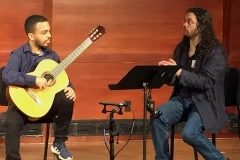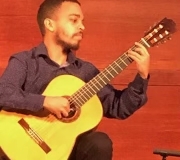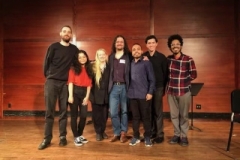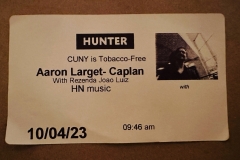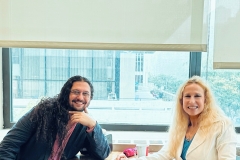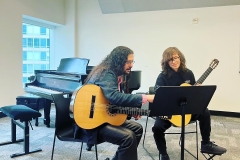Thank you for an amazing 2024!

I am incredibly appreciative of the support received this year.
Some of the concerts and trips would not have been financially feasible without the generosity of individuals and organizations.
Huge shouts to Arun Luthra, Walburga Marder, Marion Singer, Peter & Yukiko Zisa, Mary Rowell, Luigi Oliva and Nicoletta Vismara, Ciro Gentile, Gino D’Ignazio, Camille Lizarribar, Pasquale Tassone, Laura Kuhn, Renee Lewis & Chris Penny, Peter Frewen and Jenie Smith, Wolfgang and Mechthilde Weber, Yael Abrahamsson, Krista Keogh, All Classical Radio, WOMR, John McDonald, Hannabach Strings, New England Conservatory, Boston Mayor’s of Arts & Culture, NEFA, Christopher Bush, Patreon supporters, Laurie Caplan, Caroline, and my amazing wife and muse, Catherine.
Thank you so much!
A recap of a fulfilling and musical 2024!
US Premiere of Heretic by Richard Cameron-Wolfe – Best Performance of 2024 – The Arts Fuse

photo Catherine Larget-Caplan
New album – Spanish Gems – info & listen
New Publication with Edition Peters: Hovhaness, Mystic Flute – score & video
Debut at Symphony Space, Thalia Theater in New York – video
2 Premieres for Choir & Guitar:
- Alan Hovhaness – East Coast Premiere – video & review
- Vineet Shende – New movements of ‘Pravasa – Travels of the Guitar’ at Bowdoin College – video
Residency at the John Cage Trust at Bard College – blog post
Commissioned Douglas Knehans for a new work for guitar + electronics, to be premiered in 2025.
Collaboration with actors —
Recited Shakespeare on stage!

Hall of Fame inductees for the Arts, Sciences and Humanities at Cherry Creek
Collaboration with poet Charles Coe
Hall of Fame induction to Cherry Creek High School – article
New Lullaby Project concerts and premieres #’s 76, 77, 78 – website
Piano solo ‘Aurore‘ debuted by John McDonald at Tufts University – video
Concerts in Oklahoma, Oregon, Maine, New York, Massachusetts, New Hampshire, Rhode Island, and Tennessee
Joined the New England Conservatory Extension Division – link
Appointed to the Board of the American Composers Alliance
Created 22, 1-minute Guitar Instruction Videos on Youtube, Tiktok, Instagram
Album and concert reviews in Boston Musical Intelligencer, James Wegg Review (JWR), The WholeNote, The Arts Fuse, Fanfare, Take Effect.

click to enlarge
The 11 recordings reached over 10 million streams!
Returned to Europe for the first time since 2019!

Duomo di Milano

Passalacqua in Naples

Passalacqua Cappuccino
For more photos, videos, and news, follow me on Facebook, Youtube, Tiktok, Instagram, Threads, and LinkedIn!
Thank you for an incredible 2024!














 At George Fox University and U&I Event Center, I was joined by violinist Mary Rowell. We performed 4 movements of John Cage’s ‘Six Melodies,’ two movements of Piazzolla’s ‘Histoire du tango,’ and ‘Revirado’ (unruly) also by Piazzolla. A special extra was having luthiers Jeffrey Elliott and Gregory Miller in attendance, and my school classmate Ross Grogan made an appearance. Super special evening!
At George Fox University and U&I Event Center, I was joined by violinist Mary Rowell. We performed 4 movements of John Cage’s ‘Six Melodies,’ two movements of Piazzolla’s ‘Histoire du tango,’ and ‘Revirado’ (unruly) also by Piazzolla. A special extra was having luthiers Jeffrey Elliott and Gregory Miller in attendance, and my school classmate Ross Grogan made an appearance. Super special evening! My final concert of the tour was in Astoria, an area I have a long history with since my mother moved there when I was 18. I have performed in the city well over 20x and it was the first place I performed on radio. For this visit I performed in a gorgeous home overlooking the river. Jenny and Ray Lund with Ann Lederer were excellent hosts, and the audience was all I could wish for.
My final concert of the tour was in Astoria, an area I have a long history with since my mother moved there when I was 18. I have performed in the city well over 20x and it was the first place I performed on radio. For this visit I performed in a gorgeous home overlooking the river. Jenny and Ray Lund with Ann Lederer were excellent hosts, and the audience was all I could wish for. 
